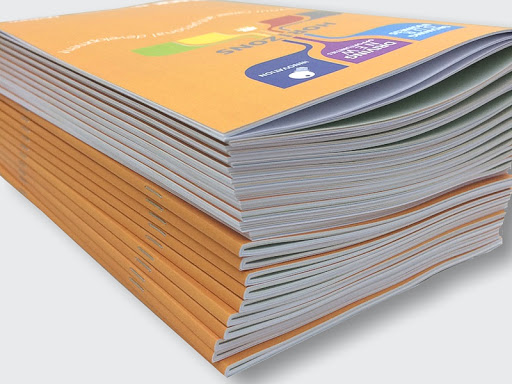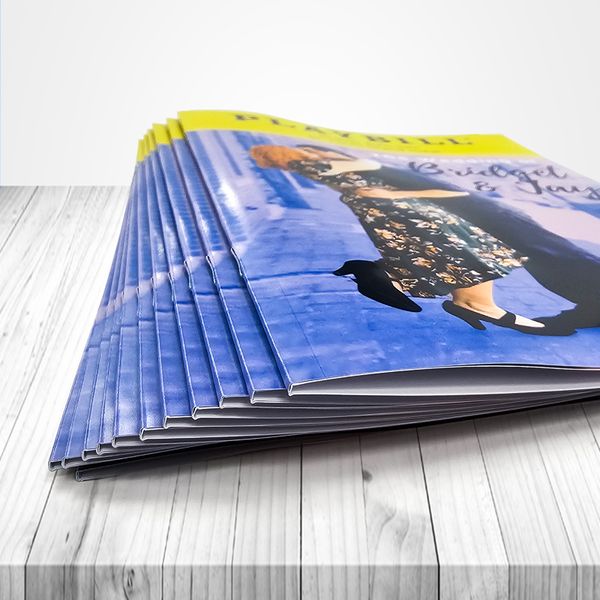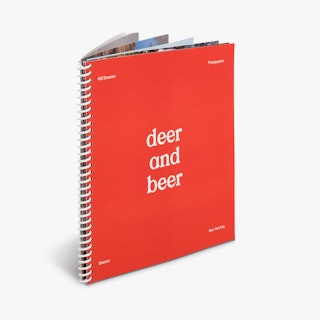The Necessary Overview to Comprehending Booklet Printing Options and Techniques
The procedure of pamphlet printing includes multiple factors to consider that can substantially affect the final product. From picking the proper format and dimension to comprehending the nuances of binding approaches, each selection plays a necessary function. Additionally, variables such as paper stock and printing techniques more influence the performance of the brochure. As one navigates these alternatives, it ends up being important to grasp just how they interconnect and what that means for the general outcome.
Understanding Pamphlet Sizes and layouts
When thinking about brochure printing, understanding the different styles and sizes readily available is vital for accomplishing the wanted presentation. Brochures can be produced in countless formats, including saddle-stitched, spiral-bound, and perfect-bound, each offering distinct advantages. Usual sizes vary from basic letter (8.5 x 11 inches) to smaller sized options like A5 (5.8 x 8.3 inches), enabling adaptability based on material and target audience.Selecting the appropriate size can influence both the design and viewers engagement. Larger dimensions could suit visually driven material, while smaller sized formats may be a lot more easy to use and mobile. In addition, the variety of pages impacts the option of binding approach, as thicker pamphlets may require stronger bindings. Eventually, recognizing these facets permits a more tailored method, making sure that the end product straightens with the desired message and aesthetic, enhancing the general efficiency of the interaction.
Selecting the Right Paper Supply

Binding Approaches: Choices and Considerations
When it concerns binding techniques for booklets, numerous options are readily available, each with unique advantages. Saddle stitch binding offers an economical service for thinner pamphlets, while ideal binding methods offer an even more refined search for thicker publications. Wire-O binding stands out for its resilience and simplicity of usage, making it perfect for files that require adaptability.
Saddle Stitch Binding
Saddle stitch binding supplies a sensible and cost-efficient service for putting together booklets, making it a prominent choice among authors and companies. This binding technique entails folding sheets of paper in fifty percent and stapling them along the fold line, producing a cool and organized appearance. Generally ideal for pamphlets with a lower page matter, saddle stitching is optimal for publications, brochures, and instructional materials. The simpleness of this strategy permits fast production and is often favored for advertising products or brief runs. It is necessary to keep in mind that saddle stitch binding might not be ideal for thicker brochures, as the back may not hold up under boosted weight. In general, it remains a dependable alternative for many printing projects.
Perfect Binding Techniques
Perfect binding is a widely used strategy that offers a sleek and expert finish to pamphlets and magazines. This approach includes gluing the web pages with each other at the spine making use of a solid adhesive, permitting a tidy edge and the capability to hold a larger variety of pages compared to saddle stitching. Perfect binding is particularly ideal for thicker brochures, such as directories and yearly records, where a tough, level back is desired. In addition, it offers the alternative for a published cover that can be developed to boost visual allure. Factors to consider such as web page count, paper weight, and the intended use of the brochure must be taken right into account, as they can influence resilience and general high quality.
Wire-O Binding Alternatives
Wire-O binding, recognized for its durability and adaptability, offers an outstanding choice for brochures that need simple page turning and an expert appearance. This binding technique utilizes a series of metal loops that hold pages securely, permitting them to exist level when open. It is specifically ideal for discussions, handbooks, and directories as a result of its durable nature. Wire-O binding is offered in various colors and sizes, fitting different page matters and thicknesses. Furthermore, it allows the addition of covers and tabs, enhancing the pamphlet's general aesthetic. Considerations for Wire-O binding consist of the option of wire shade, the size of the loops, and the level of personalization desired, every one of which can exceptionally influence the end product's appearance and performance.
Digital vs. Offset Printing: Which Is Best for You?
When selecting a printing approach for brochures, understanding the distinctions between electronic and balance out printing is important. Digital printing makes use of contemporary technology to create top quality prints promptly and economically, making it ideal for brief runs or projects needing quick turn-around times. It enables modification, supplying the capacity to print on-demand with marginal waste.In contrast, counter printing is a conventional approach that masters generating huge quantities with constant quality. It includes moving ink from a plate to a rubber blanket, then to the paper, which causes vibrant shades and specific details. Balance out printing commonly requires longer configuration times and is a lot more cost-efficient for larger volumes.Ultimately, the choice between digital and balance out printing depends on job needs, spending plan, and wanted quantity. For small, time-sensitive projects, digital might be the very best option, while countered might be preferable for larger, premium manufacturings.

Creating Your Pamphlet: Tips and Finest Practices
When developing a booklet, careful focus to format, font style choice, and color usage can considerably improve its effectiveness. A well-structured format overviews the visitor's eye, while appropriate typefaces assure readability and communicate the desired tone. In addition, efficient use of color can stimulate emotions and emphasize crucial info, making the overall layout a lot more impactful.
Choosing the Right Format
Exactly how can one effectively pick the best layout for a pamphlet? It is vital to evaluate the brochure's purpose and target audience. A tidy, organized design enhances readability and involvement. Utilizing a grid system can assist in aligning components regularly, developing a professional look. Additionally, integrating visual pecking order through varying dimensions and placements of pictures and message can direct the viewers's eye and emphasize crucial details. It is likewise essential to leave sufficient white area, which prevents overcrowding and permits better focus. Testing different designs via mock-ups can provide insight into exactly how the style executes in real-world scenarios, guaranteeing that the final product satisfies both visual and useful needs.
Selecting Suitable Font Styles
A well-chosen font style can considerably boost the overall design of a booklet, complementing the layout and reinforcing the content's message. The selection of fonts ought to consider readability, especially for body text, as it guarantees the information is accessible to all readers. Sans-serif typefaces are often preferred for electronic layouts, while serif font styles can provide a typical feel in published materials. It's recommended to restrict font choices to two or 3 to preserve visual comprehensibility. In addition, typeface dimension plays a crucial useful site duty; headings need to be not frustrating yet unique, while body text should fit for analysis. When selecting typefaces, placement with the brochure's theme and target market is necessary for efficient communication and visual charm.
Effective Use Color
Shade functions as a powerful tool in booklet style, shaping understandings and guiding reader emotions. It can stimulate feelings of trust fund, calmness, or enjoyment, relying on the shades chosen. Developers should think about shade theory principles, making sure that the picked palette aligns with the brochure's message and target market. Making use of cozy colors like red and orange can create urgency, while cooler tones like environment-friendly and blue foster tranquility.Additionally, comparison plays a vital role; complementary colors can boost readability and aesthetic allure. Uniformity in shade use throughout web pages better strengthens brand identity and communication. Ultimately, effective color implementation not just records focus yet additionally enhances the pamphlet's objective, making it an essential aspect of effective layout.
Ending Up Touches: Coatings and Unique Impacts
While lots of think about the material and layout of a booklet the most critical components, the ending up touches, such as finishes and unique effects, play an important role in boosting its total charm. Coatings can offer protection and durability, ensuring that the pamphlet stands up to deterioration. Matte finishes supply an advanced, non-reflective surface, while shiny finishings can make shades show up even more appealing important site and vibrant. Unique impacts, like click over here now embossing or foil marking, add a responsive dimension that can produce a remarkable impression. These strategies can highlight particular locations, accentuating vital information or creating aesthetic passion. Furthermore, UV covering can give a high-shine coating that boosts the total look.Together, these completing touches not just boost the brochure's visual yet likewise connect professionalism and trust and focus to detail, ultimately leaving a lasting influence on the viewers.
Expense Factors To Consider for Pamphlet Printing
Comprehending the various cost considerations for booklet printing is crucial for companies and organizations intending to enhance their budget plans. Trick elements influencing prices consist of the choice of ink, paper, and binding approaches. Greater high quality products, such as premium paper or specialized inks, usually enhance the overall expense. Additionally, the size and page count of the booklet play a significant role; bigger pamphlets call for more resources and time to produce.Another important factor to consider is the printing strategy, whether electronic or offset, as each has its own prices structure and viability for various amounts. Services ought to also consider style expenses, which can vary based upon complexity and the usage of professional solutions. Ultimately, shipping and handling fees can add to the overall, specifically for big orders. By reviewing these aspects, organizations can make informed choices that straighten with their financial abilities while attaining the desired quality in their printed materials.
Often Asked Questions
What Are the Environmental Effects of Pamphlet Printing?
The ecological influences of brochure printing consist of logging from paper production, carbon exhausts from transportation, and waste generation from discarded materials - Booklet Printing. Sustainable techniques, such as utilizing recycled paper and environmentally friendly inks, can minimize these effects
Exactly How Can I Ensure Color Accuracy in My Brochure?
To ensure color precision in a booklet, one need to utilize calibrated monitors, employ professional shade profiles, perform examination prints, and select high-grade printing services that offer shade matching and proofing alternatives for ideal results.
What Is the Normal Turnaround Time for Booklet Printing?
The typical turn-around time for brochure printing varies relying on the complexity and quantity - Booklet Printing. Generally, it ranges from a couple of days to 2 weeks, affected by aspects such as printing methods and ending up requirements
Are There Minimum Order Quantities for Pamphlet Printing?

Can I Print Pamphlets in Several Languages?
Publishing booklets in several languages is feasible. Several printing solutions use alternatives for bilingual or multilingual formats, allowing for reliable interaction. Mindful preparation assurances that create aspects suit various languages without endangering readability or aesthetics. Furthermore, aspects such as paper stock and printing techniques further affect the efficiency of the pamphlet. When considering pamphlet printing, recognizing the different layouts and dimensions readily available is crucial for attaining the wanted discussion. When choosing a printing method for booklets, comprehending the distinctions in between digital and balance out printing is essential. Additionally, the dimension and web page matter of the brochure play a considerable function; bigger pamphlets require even more sources and time to produce.Another crucial factor to consider is the printing strategy, whether electronic or countered, as each has its own prices framework and suitability for various quantities. The ecological influences of brochure printing include deforestation from paper manufacturing, carbon discharges from transportation, and waste generation from disposed of materials.
Comments on “Why Interactive Features Are Now Essential in Booklet Printing”